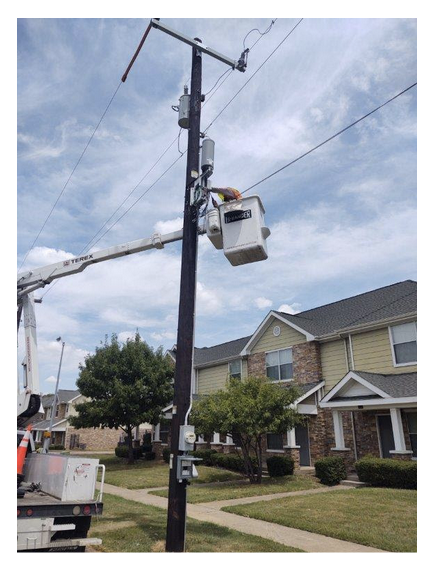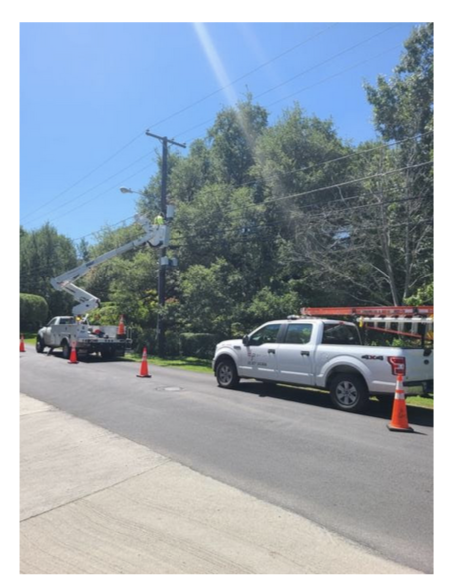
B+T Group has completed nearly 500 small cell sites over the last three years and is contracted to build 400 more for the carrier. The small cells are located primarily in the urban core to provide density and capacity.
Typically, in the turf contract mold, the program management team subcontracts much of the work on a site to other companies, including an acquisition firm, an engineering firm, and a construction general contractor. On this project, B+T added these capabilities to self-perform almost all the work itself.
“One of the things that we’ve really prided ourselves on is our ability to self-perform,” said Sonya Roshek, Vice President Field Services, B+T Group. “Nowadays, you have to be quicker, faster, better. And the only way to do that is to self-perform.”
To speed up the completion of construction drawings needed for the right-of-way permit, B+T purchased utility-location equipment and taught construction managers and field techs how to do pre-construction utility locates, which allowed them to complete drawings and structural faster, and get the right-of-way permits for the jurisdictions.
Instead of waiting on a third party to perform the make-ready on utility poles, B+T brought make-ready in-house, certifying crew members, which speeds the process between site acquisition and construction.
Another source of delay is waiting for someone to bring power to the site. Instead of subcontracting that work, B+T hired a master electrician and keeps journeyman electricians on each crew, pulling electrical permits and performing inspections with the city.
Working With Other Stakeholders

“We identify all criteria up front before we go into the field to choose which sites are our best candidates,” Roshek said. “Understanding the criteria of the engaged organizations allows us, once the carrier picks its primary candidate, to grease the skids and quickly go through the process. We have very few sites kicked back from the city or rejected by the power company.”
In the process of site acquisition, for example, B+T Group makes sure a potential pole does not have a transformer, which would bring an objection from the power company, and isn’t too close to the street corner, which would be rejected by the city.
“We’re very agile in our approach to the work, making sure that when we create or pick a particular site for adding a small cell, all of the criteria are met,” Roshek said.
Next, B+T uses its proprietary Site360 photogrammetry and 3D imagery platform to provide accurate 360-degree documentation and measurement of the potential sites.
“We can perform virtual site visits; this really helped in 2020 when, of course, travel was on hold for several months and complicated for the rest of the year,” Roshek said. “Site360 gives us not only everything we need for drawings and for structural analysis but is also key in proving to the client which is the best particular location for their project.”
The need to roll out small cells at light speed will not abate any time in the future, according to Roshek, as carriers push to get the end user closer to fiber in order to achieve the faster data speeds needed for 5G—and eventually, 6G—technology.
For more information about B+T Group’s services, visit https://btgrp.com/.
By J. Sharpe Smith, Inside Towers Technology Editor



Reader Interactions